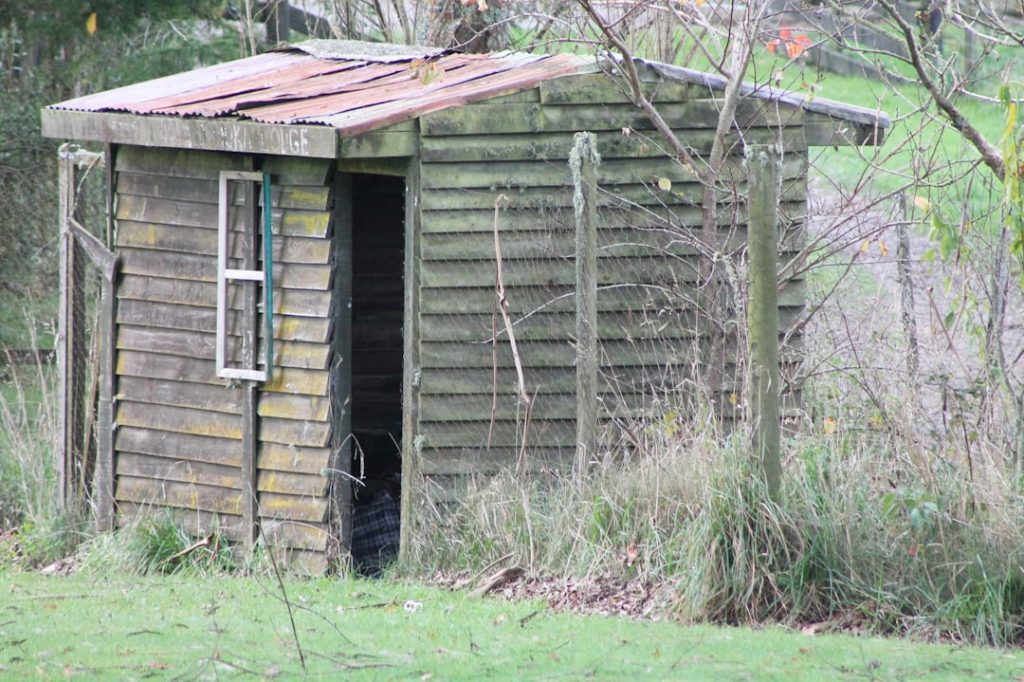Free-range chickens are commonly raised by backyard farmers and homesteaders due to their ability to roam freely and forage for food in outdoor environments. This natural lifestyle can promote better health and well-being for the chickens. However, it may also present challenges when the birds venture onto residential porches.
The presence of chickens on porches can result in unsanitary conditions, property damage, and inconvenience for homeowners. This article examines the issues associated with free-range chickens accessing porches and offers practical solutions to deter them. Topics covered include the implementation of physical barriers, the creation of alternative roosting areas, and effective training methods to discourage chickens from approaching porches.
By addressing these concerns, chicken owners can maintain the benefits of free-range practices while minimizing potential conflicts with their living spaces.
Table of Contents
Key Takeaways
- Free-range chickens can provide many benefits, but they can also cause problems when they roost on porches.
- The presence of free-range chickens on the porch can lead to unsanitary conditions and damage to property.
- Tips for keeping free-range chickens off the porch include using physical barriers and providing alternative roosting spots.
- Creating a barrier, such as a fence or netting, can help deter chickens from roosting on the porch.
- Providing alternative roosting spots, such as a designated coop or roosting bars, can encourage chickens to stay away from the porch.
The Problem with Free-Range Chickens on the Porch
The Messy Reality
Chickens can be messy creatures, and their droppings can quickly accumulate on the porch, creating an unsightly and unsanitary environment. This can lead to an unpleasant outdoor living space that homeowners may avoid using.
Damages and Disruptions
Additionally, chickens may scratch and peck at the porch, causing damage to the wood or other materials. This can lead to costly repairs and maintenance for homeowners. Furthermore, having chickens on the porch can be a nuisance, as they may make noise or become aggressive towards people using the space.
Health Risks and Hazards
Having free-range chickens on the porch can also pose a health risk. Chicken droppings can carry bacteria and parasites that can be harmful to humans, particularly if they come into contact with food or are tracked into the house. This can create a potential health hazard for homeowners and their families. Additionally, chickens may carry pests such as mites or lice, which can infest the porch and potentially spread to other areas of the home.
Tips for Keeping Free-Range Chickens off the Porch

There are several strategies that homeowners can use to keep free-range chickens off the porch. One effective method is to provide alternative roosting spots for the chickens. By offering comfortable and secure roosting areas in other parts of the yard, homeowners can encourage the chickens to stay away from the porch.
Additionally, creating barriers such as fencing or netting around the porch can help to deter chickens from accessing the area. This can be particularly effective if the barriers are tall enough to prevent the chickens from flying onto the porch. Another tip is to train the chickens to stay away from the porch using positive reinforcement.
By rewarding the chickens for staying in designated areas of the yard and discouraging them from approaching the porch, homeowners can help to establish boundaries for the chickens. Additionally, providing distractions such as toys or treats in other parts of the yard can help to keep the chickens occupied and less likely to wander onto the porch. Overall, by implementing these tips, homeowners can effectively keep free-range chickens off the porch and minimize the associated problems.
Creating a Barrier to Deter Chickens
Creating a physical barrier is an effective way to deter free-range chickens from accessing the porch. This can be achieved by installing fencing or netting around the perimeter of the porch. The barrier should be tall enough to prevent the chickens from flying onto the porch, typically at least six feet high.
Additionally, it should be securely anchored to the ground to prevent the chickens from digging underneath it. Another option is to use chicken wire or mesh netting to enclose the porch area, creating a secure boundary that prevents the chickens from entering. In addition to physical barriers, homeowners can also use visual deterrents to discourage chickens from approaching the porch.
This can include hanging shiny objects such as CDs or aluminum foil strips around the porch, which can startle and deter the chickens. Another option is to use motion-activated sprinklers or noise devices that will startle the chickens when they approach the porch. By combining physical and visual deterrents, homeowners can effectively create a barrier that will keep free-range chickens off the porch.
Providing Alternative Roosting Spots for Chickens
One effective way to keep free-range chickens off the porch is to provide alternative roosting spots in other parts of the yard. This can be achieved by installing roosting bars or platforms in areas where the chickens are allowed to roam freely. These roosting spots should be comfortable and secure, providing a safe and inviting place for the chickens to rest and roost at night.
By offering alternative roosting spots, homeowners can encourage the chickens to stay away from the porch and minimize their presence in this area. Another option is to provide sheltered areas such as chicken coops or shelters where the chickens can roost at night. These structures should be designed to provide protection from predators and the elements, as well as comfortable roosting spaces for the chickens.
By offering alternative roosting spots that meet the needs of the chickens, homeowners can effectively redirect their behavior away from the porch and towards designated areas of the yard.
Training Chickens to Stay Away from the Porch

Positive Reinforcement with Treats
One effective method is to use treats or rewards to encourage the chickens to stay in designated areas of the yard and discourage them from approaching the porch. By consistently rewarding desired behaviors and redirecting unwanted behaviors, homeowners can help to establish clear boundaries for the chickens.
Verbal Commands and Signals
Another tip is to use verbal commands or signals to communicate with the chickens and reinforce boundaries. For example, homeowners can use a specific call or sound to signal that it’s time for the chickens to return to their designated roosting spots in other parts of the yard.
Consistency is Key
By consistently using these signals and reinforcing boundaries, homeowners can effectively train free-range chickens to stay away from the porch and minimize their presence in this area. With patience, persistence, and positive reinforcement, homeowners can enjoy the benefits of free-range chickens while maintaining a clean and safe outdoor space.
Conclusion and Final Thoughts
In conclusion, while free-range chickens can be a valuable addition to a backyard farm or homestead, they can also create challenges when they start wandering onto the porch. Having free-range chickens on the porch can lead to messes, damage, nuisance behavior, and potential health risks for homeowners. However, by implementing strategies such as creating barriers, providing alternative roosting spots, and training chickens to stay away from the porch, homeowners can effectively address this issue and minimize its impact.
Overall, by taking proactive steps to keep free-range chickens off the porch, homeowners can create a more enjoyable and harmonious outdoor living environment for themselves and their families. With careful planning and consistent efforts, it is possible to strike a balance that allows free-range chickens to roam freely while also respecting boundaries and minimizing their presence on the porch. By implementing these tips and strategies, homeowners can successfully manage free-range chickens on their property and enjoy all of their benefits without any of the drawbacks.
If you’re looking for more information on keeping chickens, you might want to check out this article on 10 essential tips for building a chicken coop. It provides valuable insights on creating a safe and comfortable environment for your free-range chickens, which can help keep them from wandering onto your porch.
FAQs
What are free-range chickens?
Free-range chickens are poultry that are allowed to roam freely outdoors, rather than being confined to a coop or small enclosure. They have access to natural sunlight, fresh air, and a variety of plants and insects for foraging.
Why do free-range chickens end up on the porch?
Free-range chickens may end up on the porch because they are attracted to the area for various reasons, such as seeking shelter, finding food scraps, or simply exploring their surroundings.
How can I keep free-range chickens off the porch?
To keep free-range chickens off the porch, you can use physical barriers such as fences or gates to block their access. You can also discourage them by removing any food sources, using repellents, or providing alternative areas for them to roam and forage.
Are there any health or safety concerns associated with free-range chickens on the porch?
Having free-range chickens on the porch can lead to health and safety concerns, such as the accumulation of droppings, potential damage to property, and the risk of spreading diseases. It’s important to keep chickens in designated areas to minimize these risks.
What are the benefits of free-range chickens?
Free-range chickens have the opportunity to engage in natural behaviors, such as scratching, pecking, and dust bathing. They also have access to a more varied diet, which can result in healthier and more flavorful eggs and meat. Additionally, free-range systems can improve animal welfare and reduce environmental impact compared to intensive confinement.
Meet Walter, the feathered-friend fanatic of Florida! Nestled in the sunshine state, Walter struts through life with his feathered companions, clucking his way to happiness. With a coop that’s fancier than a five-star hotel, he’s the Don Juan of the chicken world. When he’s not teaching his hens to do the cha-cha, you’ll find him in a heated debate with his prized rooster, Sir Clucks-a-Lot. Walter’s poultry passion is no yolk; he’s the sunny-side-up guy you never knew you needed in your flock of friends!







